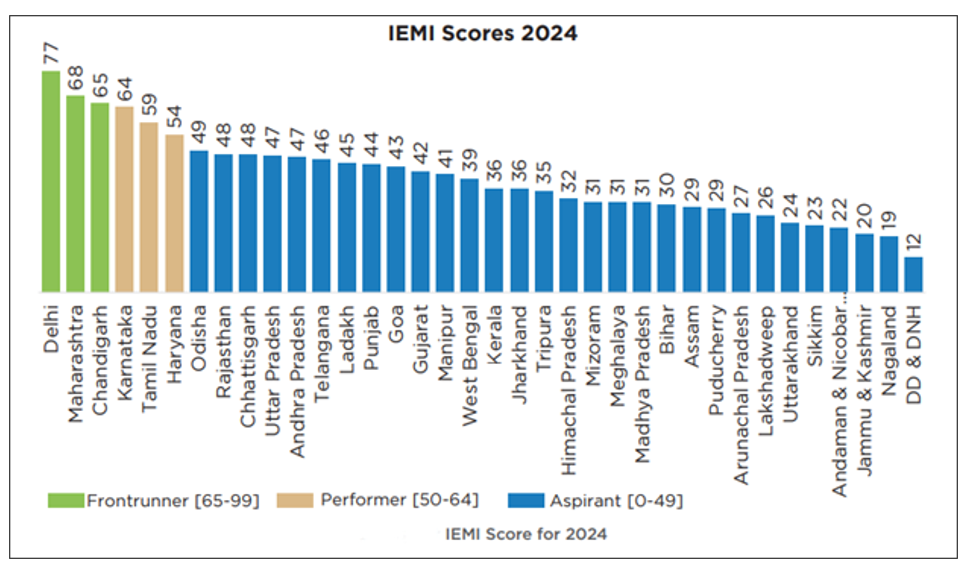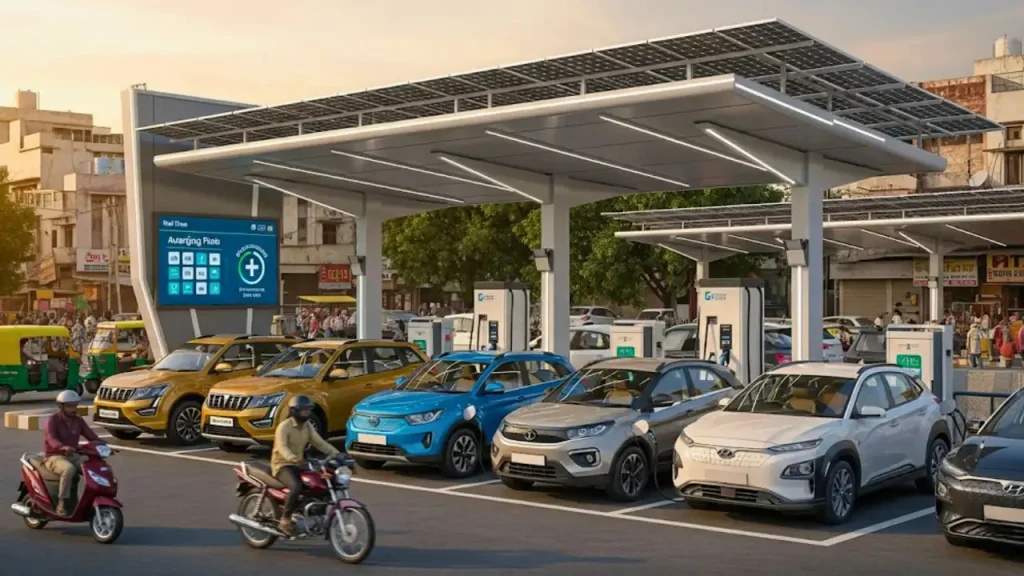SYLLABUS
GS-3: Science and Technology- developments and their applications and effects in everyday life.
Context:
NITI Aayog launched the first edition of India Electric Mobility Index (IEMI) to comprehensively track and benchmark the progress of States and Union Territories (UTs) in achieving their Electric Mobility goals.
India Electric Mobility Index (IEMI)
The IEMI is a first-of-its-kind tool developed to comprehensively track and benchmark the progress of States and Union Territories (UTs) in achieving their Electric Mobility goals.
The index provides a comparative analysis between Indian states and enables states to benchmark their efforts, identify gaps, and learn from each other’s successes.
The index aims to inform decision-making, foster healthy competition among states, and promote sharing of best practices.
The India Electric Mobility Index (IEMI) tracks, evaluates and scores all Indian States and UTs on a scale of 100 across 16 indicators under three core themes.
Transport Electrification Progress: To capture demand-side adoption.
- Chandigarh, Delhi and Maharashtra are the frontrunners under this theme.
Charging Infrastructure Readiness: To track allied charging infrastructure development
- Haryana, Karnataka, Ladakh and Himachal Pradesh are leading this theme.
EV Research and Innovation Status: Covers supply-side ecosystem R&D efforts
- Delhi, Tamil Nadu, Maharashtra, Karnataka, Haryana and Telangana stand out as frontrunners.
Based on IEMI scores, states are categorised into:
- Frontrunners (leading with robust ecosystems): Scores range 65-99.
- Performers (making progress): Scores range 50-64.
- Aspirants (requiring intervention): Score range 0-49.
Objectives of IEMI

- To recognise states that are performing well in this sector.
- To identify key success factors that have an outsized impact on e-mobility development.
- To encourage states to take a more proactive approach to e-mobility.
- To support evidence-based policymaking for sustainable EV growth.
Significance of the India Electric Mobility Index (IEMI)
- Empowers State-Level Leadership: It highlights the critical role of states and UTs in advancing India’s electric mobility transition.
- Supports Emission Reduction Goals: It aligns with India’s national objective of reducing transport sector emissions, contributing to climate commitments.
- Fosters Inter-State Collaboration and Learning: It enables states to benchmark their performance, identify gaps, and adopt best practices through a spirit of collaborative federalism in the electric mobility ecosystem.
- Drives Healthy Competition: It creates a competitive environment that promotes innovation, efficiency, and accelerated adoption of EVs.
- Catalyst for Ecosystem Development: By assessing progress in demand (EV adoption), supply (R&D), and infrastructure (charging), the index helps develop a comprehensive EV ecosystem at the state level.
Status of electric vehicles in India
- EV sales in the country have increased significantly – from 50,000 units in 2016 to 2.08 million in 2024 – compared to global EV sales rising from 918,000 in 2016 to 18.78 million in 2024.
- Over 50% of 3-wheelers, about 5% of 2-wheelers, and 2% of cars bought in 2024 are EVs.
- As of December 2024, India has over 25,000 public EV charging stations.



